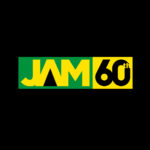Jamaica will begin rolling out its digital currency in the first quarter of 2022. This is part of an effort by the central bank to reduce transaction costs and provide financial services for citizens who don’t use banks, a spokesperson told Reuters.
In December, the Bank of Jamaica announced that it had completed a pilot program that produced 230 million Jamaican Dollars (US$1.5 Million) of the new currency. This effort follows a similar initiative by a group of Eastern Caribbean countries.
“The majority of Jamaicans have financial exclusion,” Natalie Haynes (deputy governor, Bank of Jamaica) said to Reuters late last week. She is responsible for the banking and currency operations as well as the financial markets infrastructure.
“To get these people into the formal financial systems, we decided that the central banks digital currency would be a good option.”

Haynes stated that the bank hopes to replace 5 percent of Jamaican dollars each year with the new digital currency.
Five million Jamaican Dollars ($38,000) were issued to Jamaica’s National Commercial Bank, which is a private financial institution. JMD $1 Million ($6,000) was also issued to Bank of Jamaica employees.
According to the Bank of Jamaica, 57 customers were signed up by the NCB for the new currency.
John-Matthew Sinclair is chief product officer of TFOB (2021), a NCB subsidiary.
Customers can sign up to a digital wallet where they can deposit money in exchange for digital currency which can be used for transactions. The digital currency of Jamaica follows an analogous program launched by a group from Eastern Caribbean countries last year and called DCash.
DCash is now available in Antigua and Barbuda as well as Grenada, Saint Kitts and Nevis Saint Lucia and Saint Vincent. The region’s first digital currency was issued by Bahamas in 2020.
As of Feb 3, 2021 ($1 = 155.8900 Jamaican Dollars)








